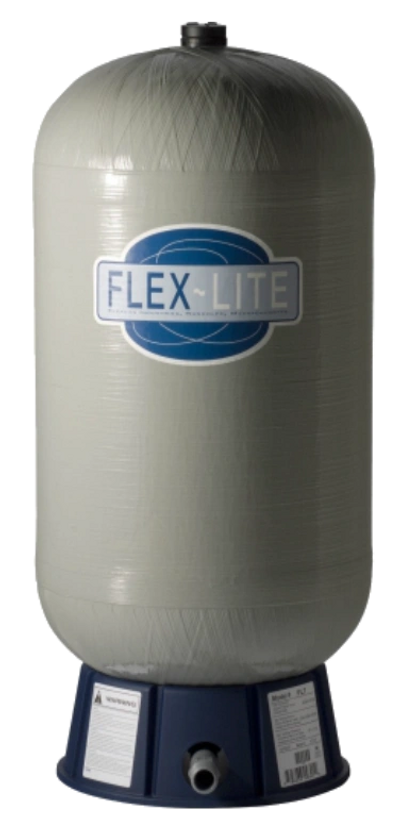20 years making clean water in the Greater Orlando area.
Pressure Tanks
A pressure tank stores energy in the form of compressed air. The well pump puts water into the pressure tank. The air that is stored in the pressure tanks bladder becomes compressed. When water is used, such as opening a faucet in the house, the compressed air forces the water out of the tank. The well pumps primary job is to fill this tank. The pressure tanks job is to supply your home with water. The tank must be properly sized and properly maintained so that the well pump does not start too frequently.
Maintenance: At least every three months check the air pressure in the tank. Add air according the the manufacturer’s instructions.
Method: Turn off well pump. Open a spigot to relieve water pressure to zero psi. Use a pressure gauge, such as the type used to check tire pressure, to read air pressure at the schrader valve on top of the tank. The pressure reading should be 4 psi below pump cut on pressure. For example, if the well pump turns on at 30 psi, the pressure tank should have 26 psi of air in the tank. If the pressure is lower than required, add air with an air compressor.
These are general instructions. Consult your tank's instructions for maintenance details. Failure to maintain air pressure may result in damage to the bladder and will surely result in short-cycling of the pump. Short cycling is a condition in which the well pump starts too frequently. Short cycling will result in higher energy consumption and a shortened life expectancy of the pump and control devices.
- Flex-Con All Fiberglass Pressure Tank Has No Metal Parts to Rust
- Excellent Replacement For That Rusty Steel Tank
- This Unit is Built to Last
- Warranty: 5 Years
- Simplified Installation
- Call or Email for Proper Selection
Call for price and availability. 407-323-9010
All prices are plus tax, in the store. Installation is available in our service area.
Contact us for details.
“Notice to consumer. Operational, maintenance and replacement requirements are essential for this water treatment device to perform as sold.” Florida Statute 817.558
Copyright © 2024 DIEROLF WATER SOLUTIONS, LLC
